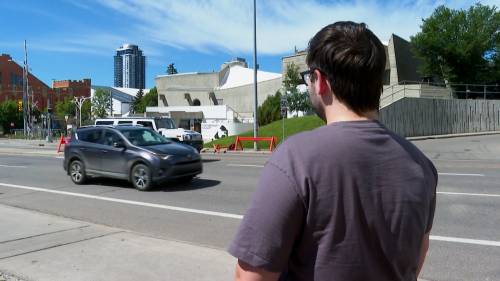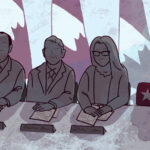When Calgary Stampede rolls into town, the city transforms into a ten-day celebration that draws visitors from across the globe. But for residents living near the Cowboys Music Festival tent, this year’s festivities have struck a particularly discordant note.
I’ve spent the past week talking with homeowners in Victoria Park and the Beltline who describe sleepless nights and frustration over what they call “unprecedented” noise levels from the popular music venue.
“It’s like having a concert inside my living room until 2 a.m.,” explains Sarah Donovan, who lives three blocks from the festival grounds. “I’ve lived here for eight years through multiple Stampedes, but this year the bass is physically rattling my windows.”
The Cowboys Music Festival, one of Stampede’s most popular satellite events, features nightly performances from major artists. This year’s lineup includes several high-profile DJs and electronic music acts, which residents say has contributed to particularly intense low-frequency sound that travels far beyond the venue.
City records show that 311 has received over 40 formal noise complaints specifically mentioning Cowboys since Stampede began last Friday. That’s nearly triple the number received during the entire event last year.
Councillor Terry Wong, whose ward includes the affected neighborhoods, acknowledges the tension between celebration and consideration. “Stampede is vital to Calgary’s identity and economy, but we also need to respect residents who call these areas home,” Wong told me during a phone conversation yesterday.
The City of Calgary’s noise bylaw normally restricts loud sounds between 10 p.m. and 7 a.m., but Stampede events receive special exemptions. These exemptions, however, come with conditions about maximum decibel levels and requirements for sound monitoring.
Dave Fraser, a sound engineer I consulted who specializes in urban acoustics, explained why this year might feel different for nearby residents. “Electronic music typically has sustained bass frequencies that travel much farther than mid-range sounds. Combined with the right atmospheric conditions, it can create a situation where people blocks away experience significant disruption.”
Cowboys Entertainment Group, which operates the music festival, maintains they’ve stayed within permitted sound levels. In a statement provided to me, they emphasized their commitment to being “good neighbors” while delivering the entertainment experience patrons expect.
“We’ve invested in state-of-the-art sound equipment designed to focus audio within our venue,” said spokesperson Jennifer Miller. “Our team conducts regular perimeter checks and adjusts levels accordingly throughout each event.”
But residents like Michael Chan, who lives in a condo tower with a direct line of sight to the tent, remain skeptical. “I’ve recorded decibel readings from my balcony showing sustained levels above 70 dB after midnight,” Chan said, showing me data he’s collected on his smartphone. “That’s well above what should be allowed to reach residential areas.”
The Calgary Stampede organization, while separate from Cowboys, has also responded to community concerns. Stampede spokesperson Amanda Davidson told me they take neighborhood impacts seriously and work with all Stampede-adjacent venues on mitigation strategies.
“We understand the unique challenges of hosting a world-class event in an increasingly residential downtown,” Davidson said. “We’re constantly evaluating the balance between celebration and consideration.”
For perspective, I visited the area around the Cowboys tent at various times over several nights. At 1 a.m. on Tuesday, standing four blocks away, I could clearly distinguish bass lines and occasional vocals from the performances. Inside nearby apartment buildings, the effect was even more pronounced as the low frequencies seemed to amplify through certain structural elements.
This tension between urban living and event culture isn’t unique to Calgary. Cities worldwide struggle with similar challenges as formerly industrial areas transform into residential neighborhoods while still hosting signature events.
Urban planning expert Dr. Richard Torres from Mount Royal University points out that these conflicts represent growing pains for evolving cities. “Calgary’s downtown and Beltline have seen significant residential intensification over the past decade,” Torres explained during our conversation at his office. “Areas that once emptied after business hours now have thousands of residents, changing the dynamic of how we manage noise and activity.”
Some affected residents have suggested solutions beyond simply lowering volume. Proposals include repositioning stages, installing additional sound barriers, ending outdoor music earlier, or providing hotel vouchers for the most affected neighbors.
As Stampede continues through the weekend, both residents and organizers seem caught in a familiar summer standoff that plays out in cities everywhere: the right to celebrate versus the right to peace and quiet.
For Cowboys and Stampede officials, these complaints represent a challenge to their social license in a changing urban landscape. For residents, it’s about whether downtown living means accepting periodic disruptions as part of the package.
The city’s response will likely shape how future events are managed as Calgary continues its evolution into a more densely populated urban center.
As I wrapped up interviews for this story, one resident’s comment particularly stood out. “We don’t want to stop Stampede or Cowboys,” said Victoria Park resident Emma Sullivan. “We just want to be able to sleep at night. Surely in 2024, we can figure out how to have both.”







